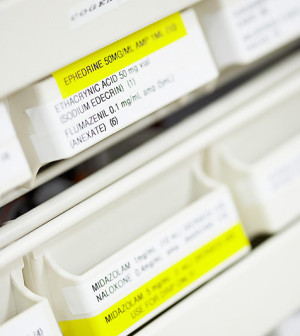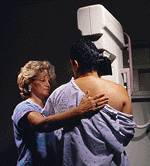- Skip Storing This Everyday Product in the Fridge Door
- Green Tea + B3 Pairing May Boost Brain Health
- Navigating Your Midlife Crisis: Embracing New Possibilities
- City Raccoons Showing Signs of Domestication
- Mapping the Exposome: Science Broadens Focus to Environmental Disease Triggers
- One Week Less on Social Media Linked to Better Mental Health
- Your Brain Changes in Stages as You Age, Study Finds
- Some Suicide Victims Show No Typical Warning Signs, Study Finds
- ByHeart Formula Faces Lawsuits After Babies Sickened With Botulism
- Switch to Vegan Diet Could Cut Your Greenhouse Gas Emissions in Half
Study Questions Use of Less-Invasive Lymph Node Surgery for Breast Cancer


MONDAY, Oct. 7A study that sought to see if a less-invasive, less-debilitating procedure could determine accurately how far breast cancer has spread fell short of the safety threshold the researchers set.
The procedure, common for women who receive chemotherapy before their tumor is removed, is known as sentinel lymph node surgery. During the procedure, doctors try to identify and remove only the lymph nodes that are most likely to be malignant, known as sentinel nodes.
The problem is that this approach can miss cancer in nearby axillary lymph nodes, which are typically found under the armpits, lead researcher Dr. Kelly Hunt, chief of surgical breast oncology at the M.D. Anderson Cancer Center in Houston, and colleagues explained.
Although having only the sentinel nodes removed is a plus in terms of preventing crippling side effects such as arm swelling, loss of shoulder movement and pain, the question remained that if the sentinel nodes were cancer-free, did that mean the axillary lymph nodes were also cancer-free, Hunt said.
To try to answer that question, the researchers determined that if sentinel lymph node surgery missed cancerous axillary nodes only 10 percent of the time, then the procedure could be a good alternative for these women.
“We didn’t quite make that point,” said Hunt. “The false-negative rate was 12.6 percent.”
In the study, the overall false-negative rate was based on the removal of two sentinel nodes.
However, Hunt’s team did find that when three sentinel lymph nodes were removed and two types of mapping tests were used before the procedure, the false-negative rate did fall below 10 percent.
“This is a huge step forward, because now we know we can use these surgical standards to make the next step toward reducing the extent of axillary surgery,” Hunt said.
Not all experts agreed with that assessment. The authors of an accompanying editorial said that the approach may only be beneficial for a small number of women with breast cancer.
“In patients who start out with cancer in their underarm lymph nodes and get chemotherapy, sentinel lymph node biopsy is only an accurate way of determining whether cancer is still left in those lymph nodes if you find three or more sentinel lymph nodes,” said editorial co-author Dr. Monica Morrow, chief of breast service at Memorial Sloan-Kettering Cancer Center in New York City.
“Many women aren’t going to meet this criteria,” she explained, because in most cases there aren’t three sentinel lymph nodes. “So, this applies to a relatively small proportion of women — about a quarter of them.”
In the future, when more and better targeted drug therapy is available, sentinel lymph nodes surgery alone might be applicable to more women, she added, and the editorial stated that the less-invasive approach should not become standard practice at this point.
The report was published online Oct. 7 in the Journal of the American Medical Association, to coincide with the presentation of the findings at the American College of Surgeons meeting in Washington, D.C.
More information
For more on breast cancer, visit the American Cancer Society.
Source: HealthDay
Copyright © 2025 HealthDay. All rights reserved.










